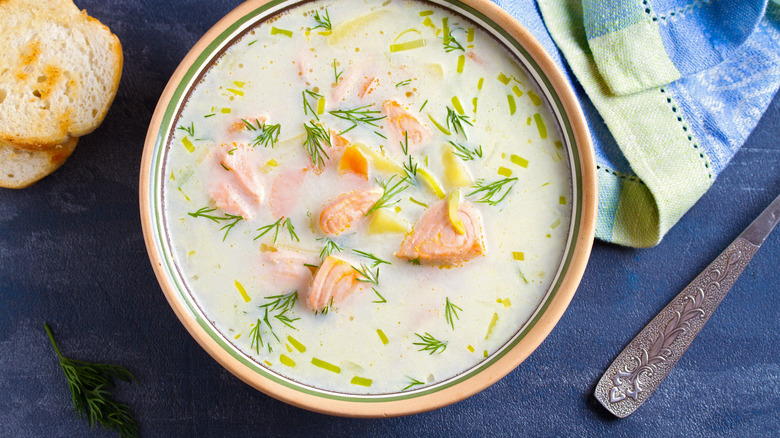The Seafood Cooking Technique Even A Novice Can Master
Seafood is incredibly temperamental, as it is a more delicate protein to handle than others. If you have ever cooked shrimp, you probably noticed how quickly it can turn rubbery and tough. The same goes for baked salmon — keep it in the oven for a minute too long and you end up with a brittle, flavorless filet that bites like a dry chicken breast. According to The Exploratorium, fish is easier to botch due to the structure of its proteins and muscle fibers. Compared to meats like beef and pork, fish have much shorter muscle fibers and less connective tissue to protect those fibers. When cooked, these connective tissues dissolve into a sort of gelatin and more quickly expose the muscles to heat.
So, the natural assumption would be to shorten its cooking time, yes? Not so fast. This solution can be tricky as the U.S. Food and Drug Administration states that, for safety reasons, most seafood must reach an internal temperature of 145 degrees Fahrenheit. Of course, optimal cooking times for each type of fish vary, which can lead to more confusion. But there's one foolproof way to cook most types of seafood that ensures a smooth, silky texture and perfect taste every single time.
Steep your fish
You don't have to fear using shrimp, squid, or haddock anymore, because steeping is excellent for cooking through the soft tissues of any seafood. Steeping food is exactly like steeping tea — you pour hot water over the meat, and let it sit until it's brought to temperature. You can even harmoniously combine the two, steeping salted salmon and green tea together in this delicious Japanese ochazuke (via Just One Cookbook).
While boiling seafood can yield unpredictable results, steeping will cook it completely while keeping it tender. Unlike poaching or sous vide, when steeping, once water meets meat, heat is no longer applied. If you don't have a teapot, feel free to simply add seafood to a pot of water that was just boiled. It's a much more forgiving method for seafood, which can so suddenly go from raw to overdone. Despite this, you want to pay your dish some mind because some kinds of seafood are brought to temperature much more quickly than others. A thick salmon filet will require many more minutes than shrimp or squid, for example.
Bon Appètit explains that while salty water works great as a steeping medium for softer fleshed fish like cod, shrimp and squid benefit from a simple, but strong broth made with salt, sugar, vinegar, and aromatics or a fish bone broth.

